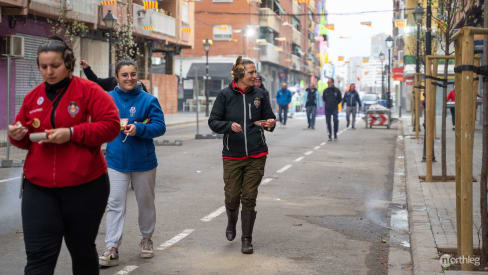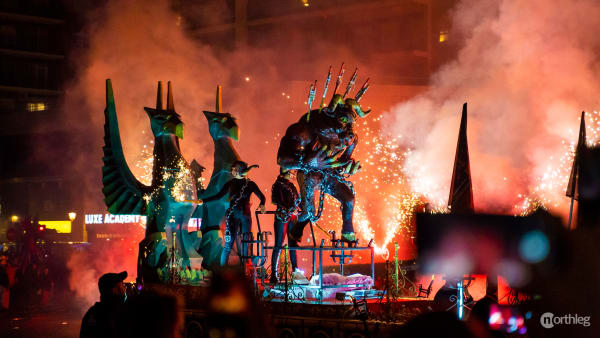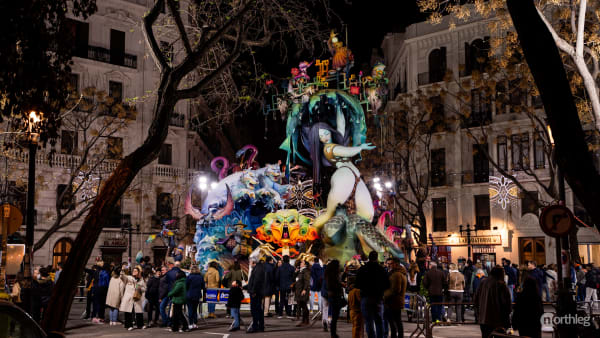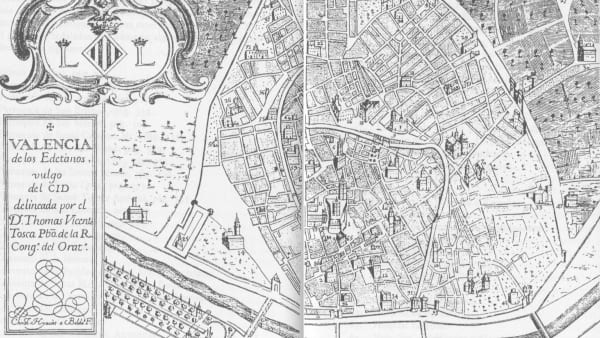The types of Despertàs
The types of Despertàs
Fallas is a festival to be relentlessly celebrated, and that doesn’t go well with sleeping in. So the committees and their members organise the Despertàs to make sure the city doesn’t miss even the smallest opportunity to celebrate the festival.
This means that early in the morning, hundreds of falleras and falleros will parade around the city, followed by marching bands and exploding, loud firecrackers.

Despertà general
This is how Valencia is woken up every morning at 8:00 am between the 16th and the 19th of March. These despertàs announce that the final, most exciting and most eventful days of Fallas have finally come. The Plantà has taken place the night before, and the people can finally come out in the streets and see their city populated by the towering and colourful fallas.
These days, some might still struggle to get up, especially if they have been partying all night, but the despertà surely makes it hard to stay in bed. An atmosphere of trepidation and camaraderie pervades the city. As the Despertà’s parade comes to its conclusion, the smell of sweet fried pastries and chocolate fills the air.
Fallas committees often organise a xocolatà, a filling Valencian breakfast for the participating members. The meal normally includes dense hot chocolate and buñuelos de calabaza or ensaimadas.
Of course not all falleras and falleros attend these events, as they might stay up late at night, involved in other Fallas events. The Fallera Mayor, however, always attends the Despertà.
Macrodespertà
The Macrodespertà, sometimes called Macrodespertà mayor, is the first despertà of the year. This loud wake-up call on the last Sunday of February lets the entire city know that the Fallas festival is about to start. On the day of the Fallas proclamation - the Crida - Valencia is woken up at 7:30 am by the sounds of firecrackers, marching bands, and hundreds of falleras and falleros walking their route through the city.
Early in the morning, the Fallas committee members who will parade gather at the San Juan del Hospitalet church for a homage to Saint Barbara - the patron saint of explosive handlers. After this, the Fallera Mayor and the Fallera Mayor Infantil, together with their Cortes de Honor, start the parade. The route will include Calle de la Paz and end in Plaza del Ayuntamiento for the Disparà.
To sign up for these events, the falleros and falleras must have presented their firework licences to the Junta Central Fallera. On the day, they also need to display their permits to handle such explosives.
Despertà Infantil
The Despertà Infantil is basically the same thing as the adults’ event, with the only difference being that it is children that parade in the city. The children’s parade normally starts just ten or fifteen minutes before the adults’ one. Sometimes, the children’s event on the last Sunday of February is also called Microdespertà.
The young falleras and falleros are usually less loud than the adults because they are technically not allowed to use the trons de bac until they’re 16. Instead, they use less powerful and less noisy firecrackers, along with bombetas, the smallest and most harmless type of firecracker.
Disparà
This is a large pyrotechnic display that follows the Macrodespertà. After hundreds of Fallas committee members, both adults and kids, have walked this loud, exhilarating parade, they all gather in Plaza del Ayuntamiento for the final act, the Disparà (from disparar, to shoot). This is the final, thundering firework display that is sure to wake up even the heavy sleepers all over the city.
Although the display is very loud and similar to the Mascletà, it has lower quantities of explosives, and it is thus less aggressive. To finish off, the participating falleras and falleros are offered breakfast. This usually consists of hot chocolate and buñuelos de calabaza or ensaimadas.
















